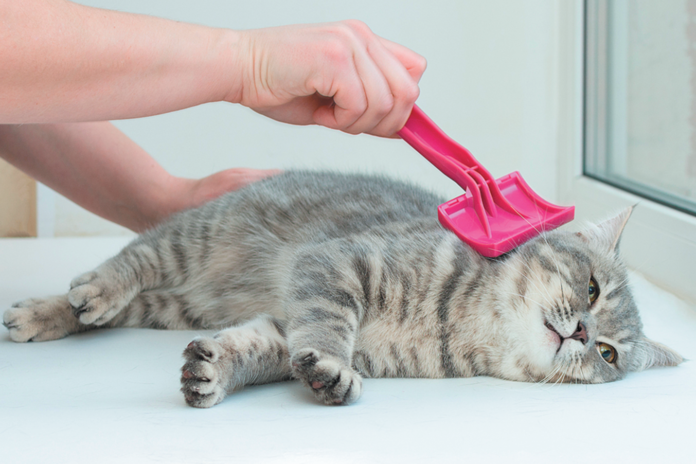You can’t prevent diseases for which your pet might be genetically primed. But a lot of illnesses are about lifestyle as well as genetics. With that in mind, there’s much you can do to help your feline friend stay healthy and reach her natural lifespan, which could be 20 years or more. Here are seven steps for your pet to enjoy a good life into the 2030s, and maybe even the 2040s.
- Keep your cat in ideal body condition, which is a veterinarian’s way of saying make sure she doesn’t get fat — or doesn’t stay fat. Obesity is implicated in the development of a number of diseases, including diabetes and heart disease, not to mention arthritis and other musculoskeletal ills that often cause much more pain and progress much more quickly in overweight felines than trim ones.
- Keep your cat entirely indoors — or outside only if in an enclosed area that she can’t leave and that other animals can’t get into. Cats that are allowed to roam outside often don’t live to see age 5. There’s just too much Russian roulette involved, including the possibility of being hit by a car, being attacked by another animal, and sustaining a fatal injury on a fence or other object. Cats that are always kept safely confined are more apt to be the ones who live to age 18 or 20, or more.
- Provide an enriching life for your pet. You’re not “done” with your responsibility to your cat just because you don’t let her out. It’s incumbent upon you to make her life indoors as interesting as possible. Otherwise, you’re imprisoning her without any compensation for having to live inside your home or apartment. Make sure she has interactive games along with food puzzles, cozy places where she can snuggle, predictability in mealtime, and regular attention from you. Remember, though beautiful, she is not an ornament. She is a sentient being that needs some routine and some action. The activity and emotional satisfaction will keep both her mind and body healthy.
- Keep your cat well groomed. Brush your pet’s coat regularly. This is more than a beauty regimen. Brushing at least two or three times a week will remove debris, parasites, and potential human allergens. It will even help improve blood circulation. And your pet will end up with fewer loose hairs in her digestive tract than she normally would after self-grooming sessions, which in turn will cut down on hairball production. Many cats enjoy being brushed, incidentally, as long as you stop when they give you signals that they’re done. It improves the bond between owner and pet.
- Brush your pet’s teeth at least every other day. Tooth brushing will help prevent dental disease. Once a day is best, but you can get away with every other day if need be. Every three days is not enough because after two days, the soft plaque on a cat’s teeth will harden into tartar under the gum line. It takes a veterinarian to remove it while the cat is under anesthesia. And if it isn’t removed often enough, tooth decay ensues. A cat riddled with tooth decay isn’t going to fare as well as one with good oral hygiene.
- Schedule veterinary wellness visits. Especially because cats are so good at hiding their pain, it’s essential to take them for regular veterinary visits. The screenings that veterinarians perform can catch things much earlier than you could. Vets are also trained to see and feel things that you wouldn’t know to be on the lookout for. And the earlier something’s diagnosed, the better the chance that it can be treated successfully. As we say on page 2 of this issue, once a year should suffice for a young or middle-aged cat. But once she reaches age 11 — or younger if she is already known to have a health condition — twice a year makes more sense.
- Reduce emotional stress. By this we mean reducing not only the cat’s stress by tending to her needs but also by shielding her from your own stress when possible. Our felines are keenly aware of our moods and emotions, and their fight-or-flight systems can kick in if they sense we are angry or otherwise upset. Of course, you can’t always keep a lid on your stress, but at least try to keep in mind that your pet understands your general state of mind and responds to it internally. Just as you might try to protect a child from your anxiety, you want to extend that consideration to your cat.





Wow…thanks for all that information. My cats will get some play time today. Friends complain about being cold and having to turn up the heat. If I’m cold I just “throw on another cat”
And don’t feed them grain.
Late to this article but I loved it – for my 10 year old Bianca.